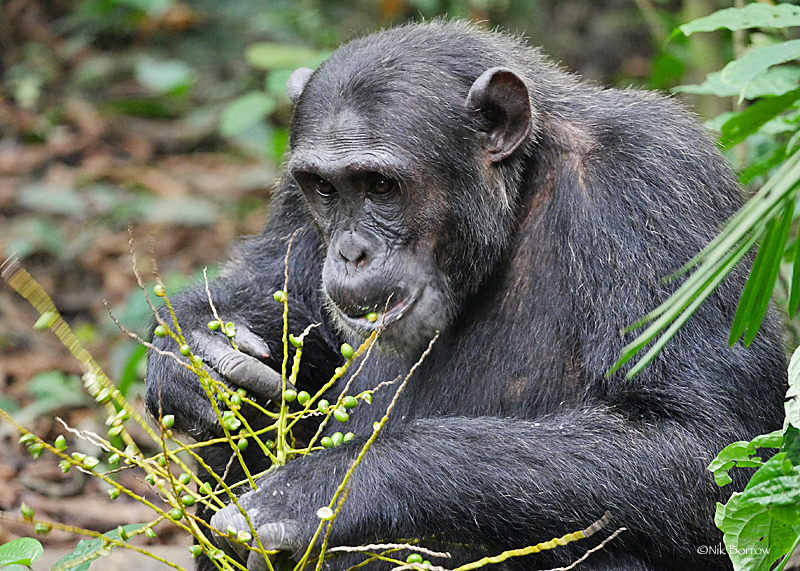- Home
- Conservancy
- Chimpanzee
Description
he common chimpanzee (Pan troglodytes), also known as the robust chimpanzee, is a species of great ape. The common chimpanzee is usually called the chimpanzee (or "chimp"), though this term can be used to refer to both species in the genus Pan: the common chimpanzee and the closely related bonobo, formerly called the pygmy chimpanzee. Evidence from fossils and DNA sequencing shows both species of the genus Pan are the sister taxon to the modern human lineage.
The common chimpanzee is covered in coarse black hair, but has a bare face, fingers, toes, palms of the hands, and soles of the feet. It is considered more robust than the bonobo, weighing between 40 and 65 kg (88 and 143 lb) and measuring about 63 to 94 cm (25 to 37 in). Its gestation period is eight months. The infant is weaned at about three years old, but usually maintains a close relationship with its mother for several more years; it reaches puberty at the age of 8 to 10. Its lifespan in the wild is 36 years[3] and its lifespan in captivity is about 50 years.
Fun Facts
The common chimpanzee lives in groups which range in size from 15 to 150 members, although individuals travel and forage in much smaller groups during the day. The species lives in a male-dominated, strict hierarchy, which means disputes can generally be settled without the need for violence. Nearly all chimpanzee populations have been recorded using tools, modifying sticks, rocks, grass and leaves and using them for acquiring honey, termites, ants, nuts and water. The species has also been found creating sharpened sticks to spear Senegal bushbabies out of small holes in trees.
The common chimpanzee is listed on the IUCN Red List as an endangered species. Between 170,000 and 300,000 individuals are estimated across its range in the forests and savannahs of West and Central Africa. The biggest threats to the common chimpanzee are habitat loss, poaching and disease.





